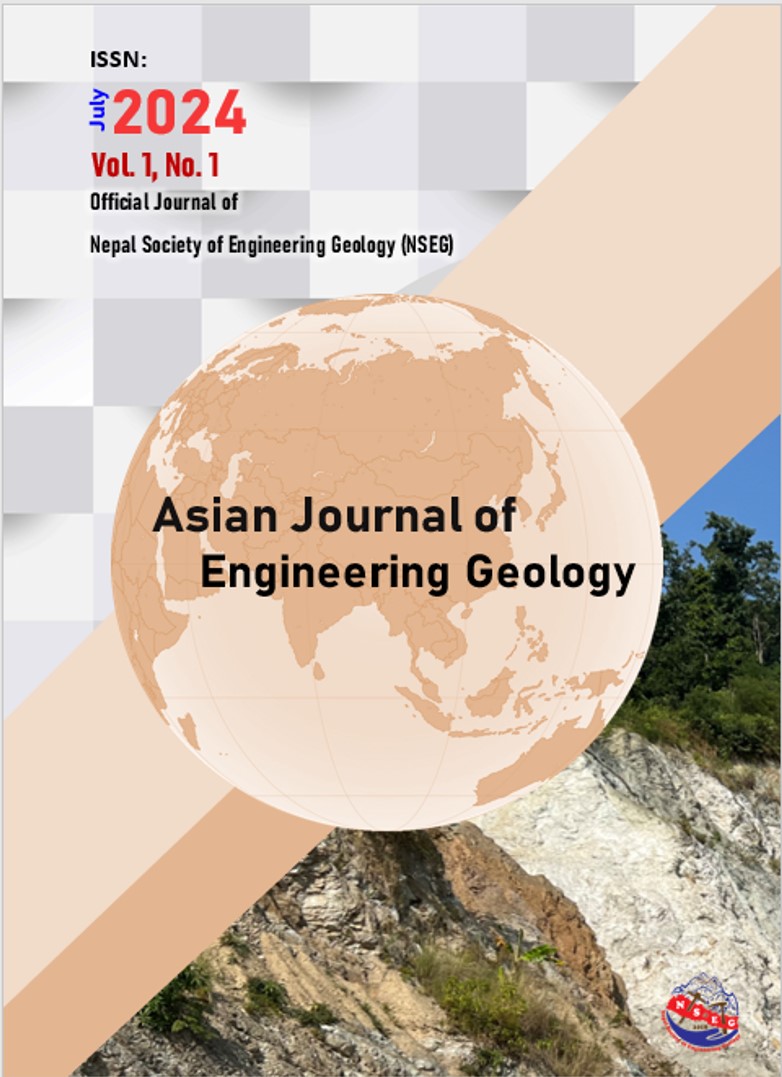Influence of Variations in Precipitation at Pore water Pressure Causing Surface Layer Failure of Naturally Undulated Slope of the Nau Kilo at Narayangadh-Mugling Road, Central Nepal
Keywords:
Hillslope Hydrology, Threshold for shallow failure, Pore water pressureAbstract
This work focuses on the naturally undulated slope with topographic failures, their flow direction, and the discharge of hill slope seepage, to recognize the pore water pressure variations phenomenon in connection with slope failures in the hollows. A small naturally undulated slope containing a topographic hollow, with six failures caused by rainfall events from 2001 to 2023, was chosen for this research work. The precipitation date of July 31 2003 was used for seepage and slope stability modelling in the GeoStudio environment. A threshold relationship between the topographic hollow area and maximum pore water pressure was prepared for the 24-hour maximum rainfall data and its 5, 10, 25, 50, and 100-year return period. Each return period rainfall event is normalized into a 24-hour event using daily rainfall of 6 min length with potential seepage face applied for the simulations. Furthermore, a threshold relation between the study's topographic hollow area and maximum pore water pressure indicates that a hollow of 100 sq. m area can develop maximum pore water pressure of 6.94 kPa as indicated by 24-hour maximum rainfall data.
References
Acharya K. P., Bhandary N. P., Dahal R. K. and Yatabe, R. (2016). Seepage and slope stability modelling of rainfall-induced slope failures in topographic hollows. Geomatics, Natural Hazards and Risk, 7(2), 721-746.
Setyawan A., Alina A., Suprapto, D., Gernowo, R., Suseno, J. E. and Hadiyanto, H. (2021). Analysis slope stability based on physical properties in Cepoko Village, Indonesia. Cogent Engineering, 8(1), 1940637.
Downloads
Published
Issue
Section
License
Copyright (c) 2024 Nepal Society of Engineering Geology (NSEG)

This work is licensed under a Creative Commons Attribution 4.0 International License.




